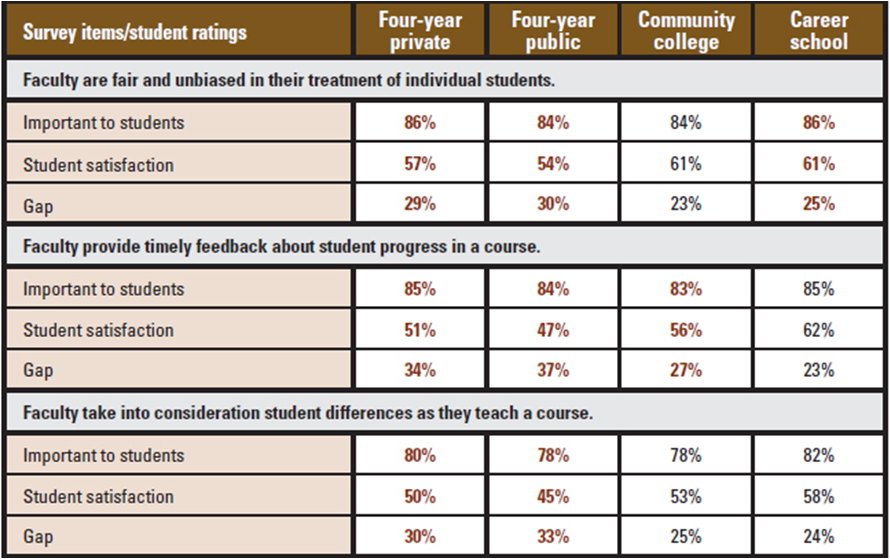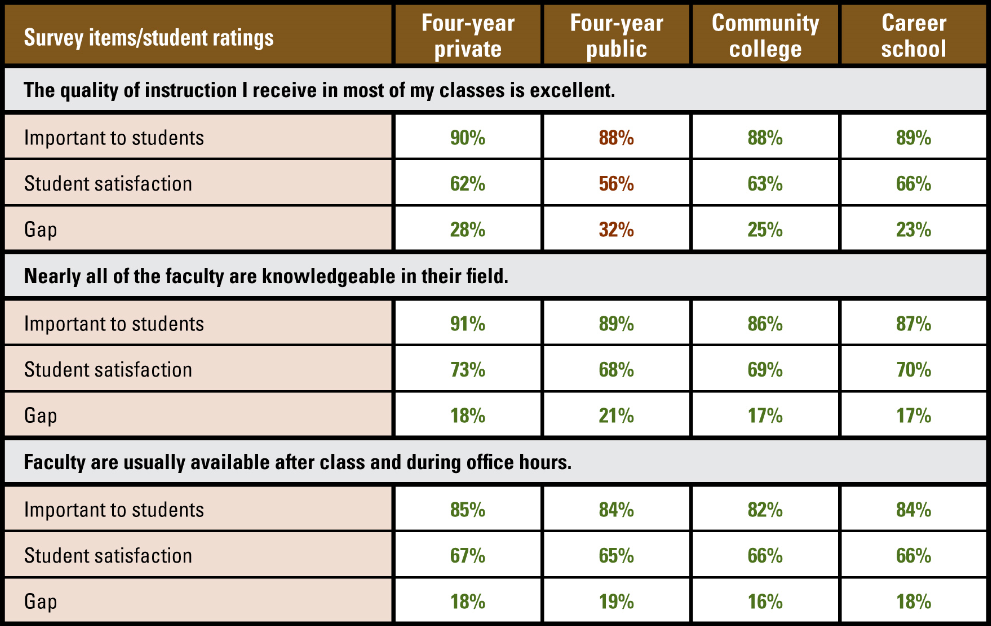student success
Are college students satisfied with faculty?
Faculty interactions are the pivotal point of the college student academic experience. The quality of the instruction students receive from faculty, the way faculty evaluate student work, and the availability of faculty outside of class are three key elements that shape student perceptions about the academic quality of their college experience. So how do the nation’s students feel about their interactions with faculty?
We’ve examined that question in the 2014 National Student Satisfaction and Priorities Report. This report pulls data from nearly 600,000 students attending more than 700 campuses nationwide. The tables below show the percentage of students who said that an issue was important to them, the percentage of students who were satisfied with a specific issue, and the “gap” score (the difference between importance and satisfaction). Higher gap scores indicate that students are not as satisfied on issues of high importance.
On faculty-related items, four-year institutions had high gap scores on three key issues about faculty bias and feedback.

The issue of timely feedback could be partly one of managing student expectations. Many students have grown up in a culture of immediate contact, feedback, and information. They may not understand why they cannot get instantaneous feedback from faculty, so it is important to communicate timelines for posting grades and faculty feedback. Timely feedback is also crucial to student retention, both for informing the student of progress and for alerting campuses to students who need assistance to persist. The high importance scores and performance gaps for this issue suggest it is one campuses need to address systematically.
Regarding faculty knowledge and availability, students were very positive. They also showed high levels of satisfaction with the quality of instruction, with one exception.

The quality of instruction at four-year public institutions was the only challenge item from this group. This could be due to class sizes, which tend to be larger for this sector, or perhaps classes being taught by teaching assistants or adjuncts.
See the 2014 National Student Satisfaction and Priorities Report for additional findings
Download 2014 report to see more satisfaction-priorities responses on issues such financial aid, career services, tuition, campus safety, and more. There are also addendums with in-depth results by institution type: four-year private, four-year public, community colleges, and career schools.
You can also learn more about the survey instrument used for the report, the Student Satisfaction Inventory. And I am happy to answer any of your questions, too. Just send me an email or connect with me on Twitter.

